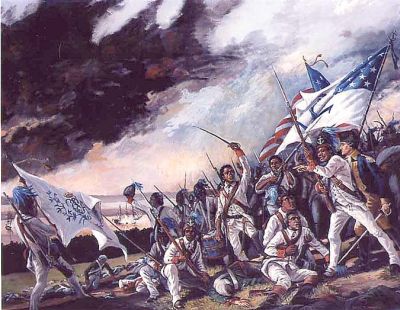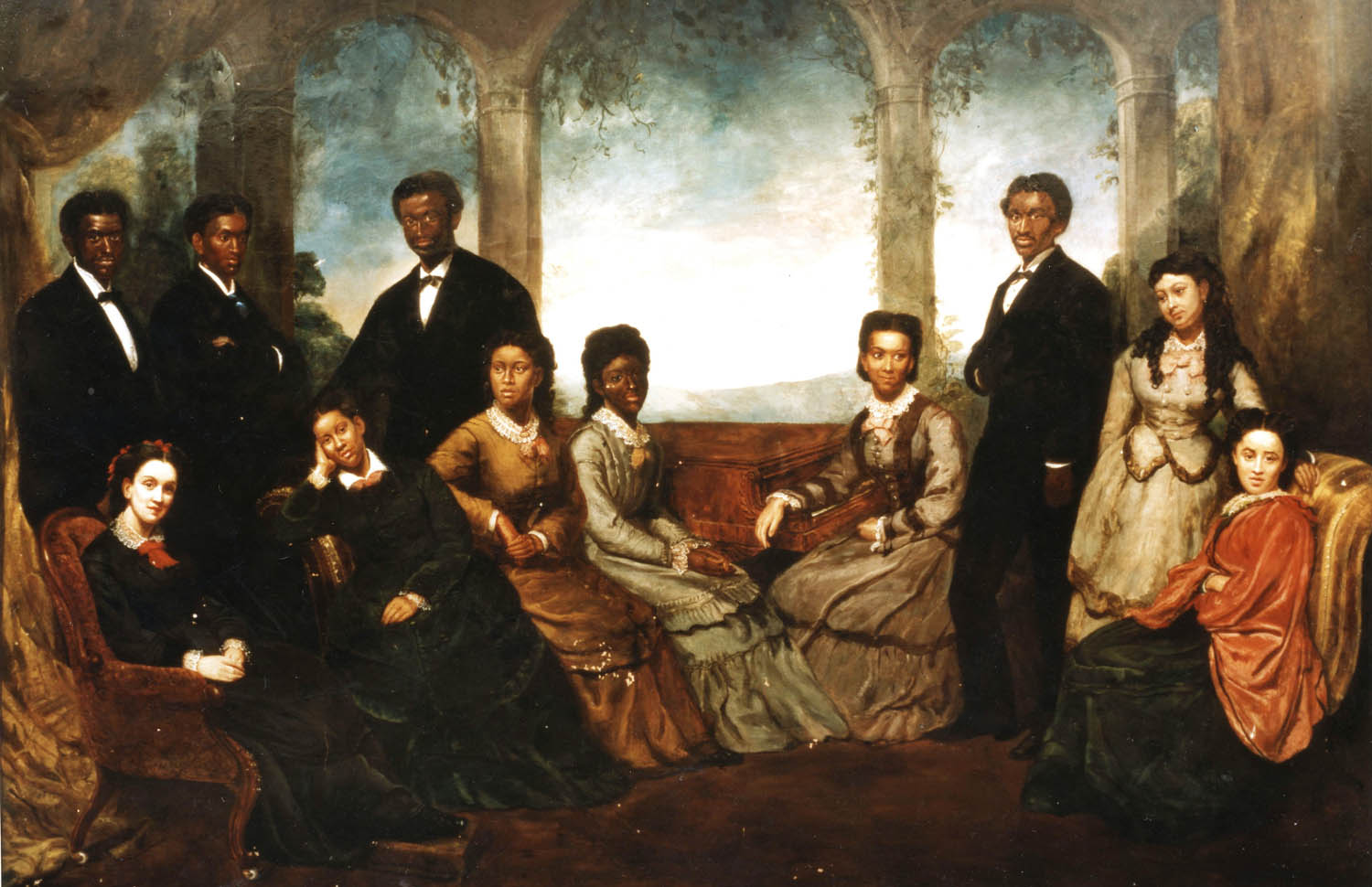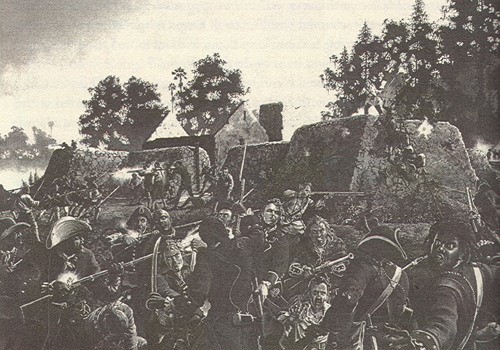Agrippa Hull was one of the most remarkable and unnoticed African Americans of the
revolutionary era. He served for six years and two months in Washington’s Continental
Army, which earned him a badge of honor for this extended service. But Hull’s influence on shaping the
abolitionist thought of Tadeuz Kosciuszko, the
Polish military engineer for whom he served as an orderly for the last 50 months of the war, is the hidden importance of the young black patriot.
Said to be the son of an
African prince, Agrippa Hull was born free in Northampton,
Massachusetts on March 7, 1759. Little is known of his father, who died when Hull was an infant; but his parents were members of the Congregational Church where Jonathan Edwards occupied the pulpit. When economic stress overcame Bathsheba Hull, Agrippa’s mother, she sent the boy to Stockbridge in the Berkshire Hills of western Massachusetts, to live with a free black farming family. It was here that Agrippa grew up in the mission town largely composed of Stockbridge Indians.
Shortly after his eighteenth birthday, Agrippa enlisted in the Continental Army, where he was assigned as an orderly to General John Paterson of the Massachusetts Line, At Paterson’s side, Hull witnessed the surrender of
British General John Burgoyne at Saratoga,
New York, endured the winter of 1777-78 at Valley Forge,
Pennsylvania and was part of the battle at Monmouth Courthouse,
New Jersey in June 1778. In May 1779, Hull was reassigned to Kosciuszko, who had come in 1776 to offer his services as a military engineer to the Continental Congress and was designing the fortifications at West Point. This launched a long comradeship. In a day without Christmas leaves and periodic furloughs, Hull was at Kosciuszko’s side for 50 months, serving as attendant and messenger. After Kosciuszko was sent south to serve as the chief military engineer of Washington’s Continental Army, Hull was thrust into the bloodiest and most intense phase of the war. Reaching
North Carolina in October 1780, Kosciuszko and Hull confronted the pitiful condition of Washington’s army. General Nathanael Greene, the southern commander, peppered General Washington with pleas to clothe and boot his small army: “The miserable situation of the troops for want of clothing,” wrote Greene on one occasion, “has rendered the march the most painful imaginable, several hundreds of the soldiers tracking the ground with their bloody feet.”
In this cockpit of war, Kosciuszko and Hull had many opportunities to witness the operation of plantation
slavery in the South, even as its fabric was shredding. Above all, they learned on a daily basis that southern slaves were willing to pledge their lives for the British cause in exchange for freedom. Wherever they went, in whatever the battle, they found that plantation slaves fled in shoals to the British army whenever it was within reach, responding to the November 1775 proclamation of Lord Dunmore, the royal governor of
Virginia, that offered freedom to any escaping slave. To witness this massive slave rebellion must have deeply impressed Hull and Kosciuszko. Indeed, it shaped Kosciuszko’s attitude toward slavery and inspired him to think about how America might be transformed in the crucible of war.
By the time the southern phase of the war ended in May 1783, Hull had participated in almost every major battle of the bushwhacking campaign—at Cowpens, Eutaw Springs, Ninety-Six, Guilford Courthouse, and the Siege of Charleston, which finally brought the British to their knees. Sailing first from Charleston to Philadelphia with Kosciuszko, Hull refused the Polish general’s invitation to return with him to Poland. Then the war-hardened veteran made his way back to Stockbridge after mustering out at West Point in July 1783 with his discharge signed by Washington himself. In the seven-year scrum of war, Hull had discovered himself, and for the remainder of his long life he replayed his revolutionary experiences with relish. Stockbridge’s first historian, Electa Jones, described how the war veteran, back in the Berkshires, had “no cringing servility, and certainly never thought meanly of himself” and yet “was perfectly free from all airs and show of consequence.” The patriot soldier who served a longer term in the war than a vast majority of the “sunshine patriots,” could well afford to see himself in this light.
Returning to Stockbridge, Hull found a place in the household of Theodore Sedgwick, a well-born and successful young
lawyer who had just won a landmark slavery case before the Massachusetts Supreme Judicial Court that gained the freedom of Elizabeth Freeman, soon known as
Mum Bett. Hull would serve Sedgwick’s family for almost two decades, working alongside Mum Bett, who virtually mothered the brood of Sedgwick children.
In July 1785, Hull purchased a half-acre lot just across the Housatonic River from Stockbridge. For generations, acquiring freehold property was treasured in New England as the foundation of independence. But many white veterans, returning from the war, were unable to gather the means to purchase even a small plot of land. From this small start, Hull added to his land holdings for many years, becoming Stockbridge’s largest black landowner. Hull's land purchase in 1785 coincided with his marriage to Jane Darby, a young black woman from nearby Lenox who had fled an abusive master, taken refuge in Stockbridge, and appealed to Theodore Sedgwick for help in gaining her freedom after her owner came to seize her. A religious woman, Darby was known as a woman of excellent character and made a profession of her faith in Christ. Before long, Hull’s wife brought four children into the world.
By the early 1800s, now in his forties, Agrippa Hull lived out Jefferson’s ideal of a self-disciplined, civic-minded, and self-sustaining yeoman farmer—the model of what Jefferson imagined was the future of America. When the tax assessor made the rounds for levying the state and town minister taxes, Hull’s assessment put him much below the town’s well-circumstanced lawyers, farmers, artisans, and shopkeepers but ahead of 40 percent of the white householders and first among the 14 taxable black families. All around him landlessness was becoming the unwelcome situation for an increasing percentage of white Massachusetts householders. But Hull carefully saved and enlarged his small farm, raising sheep, maintaining a horse and milk cows, and cultivating an apple orchard. To Hull’s delight, Elizabeth Freeman became his immediate neighbor along what was called Negro Pond after she purchased land there in 1803, 1809 and 1811. By the early nineteenth century, Grippy, as he was called, had endeared himself to almost everyone in Stockbridge. “His presence at weddings seemed almost a necessity,” wrote the town’s historian At weddings, he “wedged himself and his ‘good cheer’ into every crowded corner, his impromptu rhymes and his courteous jokes . . . always welcome.”
While enlarging his farm, Agrippa continued to serve the Sedgwick family alongside Mum Bett. But by the early 1800s, this role was wearing thin. Hull left the Sedgwick household a few years after his employer ended his political career in 1800 with a paroxysm of conservative ranting, and it is possible that Sedgwick asked him to leave his service. Hull had stood with other Federalist voters, but now he became a Jeffersonian. Though Stockbridge was deeply divided politically, he remained endeared to most white villagers. His equanimity, lack of pretense, zest for life, and antic humor reminded them, it seems, of their better selves.
Marrying a second time after his first wife died, Hull weathered the severe depression of 1819-1822, remaining clear of debt while holding fast to his small farm. As late as 1841, Stockbridge’s Weekly Visitor commended Grippy as a man “free from debt—does not owe a penny” and is “strictly honest in all his dealings with his fellow men.” In 1822, he celebrated the marriage of his 26-year old daughter Charlotte to Morris Potter in Stockbridge’s Congregational Church. Several years later, Hull joined the Congregational Church, amidst one of the revivals that recurrently struck Stockbridge. Thereafter he was a devout member.
Almost simultaneous with his belated acceptance into the church, Hull and his wife Peggy adopted six-year-old Mary Tilden, whose mother Betty toiled as a slave in New Lebanon, New York, barely five miles across the Massachusetts border. Weary of waiting for New York to give freedom to the dwindling number of slaves, Mary’s mother had run away from her master with her four-year-old daughter, followed a well-trod route of escaped slaves from New York’s eastern border to western Massachusetts, and finally reached Stockbridge. There she found refuge with Agrippa and Peggy Hull, who hid her “so that the officers couldn’t find her to take her back to her master.” Shortly, the Hulls adopted Mary, just as New York’s legislature finally put an end to slavery.
In 1831, Grippy made what was probably his last venture out of Stockbridge. The journey to West Point in 1831 was memorable. A half-century before, he had served with Kosciuszko for many months at the Hudson River fortifications before they went south for the final campaign of the revolutionary war. This time, Hull was part of a Stockbridge entourage that visited West Point, now the home of the U.S. Military Academy. Catharine Sedgwick, daughter of his former employer, wrote of how Grippy “revisited West Point, a pilgrim to a holy shrine!” He was “slightly bent by the rheumatism, and his locks somewhat grizzled,” she wrote, but beneath his “fleecy locks and black complexion” was “a mind as sagacious as Sancho’s [Cervantes’ Sancho Panza] and a gift of expression resembling in its point and quaintness that droll sage. He is, however, far superior to Sancho; for with his humor he blends no small portion of the sentiment and delicacy of Sancho’s master.” He “was one of a large party that included the young, the gay, and the beautiful,” wrote Sedgwick; “but he was, as most fitting, the most noticed and honored of them all.”
Hull’s return to West Point offered an opportunity for special homage to the officer he served so faithfully during the revolution. Recently erected was a monument to the Polish hero, paid for by West Point cadets from their slender wages. Of course, everyone in the party wanted to hear the stories about Kosciuszko, who had designed the fortifications at West Point. Grippy obliged with pleasure. “If you wish it, young ladies, you shall have a tale; for when it’s about the General, love and memory never fail.” Grippy concluded his stories of his long service with the general by saying, “he was a lovely man!”
Faithfully served by his second wife, Hull maintained his spotless reputation and grew with age into a lionized village sage, something like an African village
griot (storyteller). White Stockbridgians held him up as a model for the village’s rambunctious youth. The zest for life, abounding wit, and folk philosophy of the aging Hull fell from his lips at unexpected moments. “Which is worst—the white black man, or the black white man?” Grippy would ask, “to be black outside, or to be black inside?” “It is not the cover of the book, but what the book contains is the question,” he was fond of saying. “Many a good book has dark covers.” This kind of satiric wit, reflecting “African traditions of improvisational humor, proverb, and metaphor,” gently lampooned New England society.
Self-effacing to his last breath, the man who served as a private in the Continental Army for six years and two months lived out his life on his own terms. He followed his own moral compass, shaping his life around the values that Jefferson believed constituted the best hope for sustaining the American republic. He died on May 21, 1848, Stockbridge’s last surviving veteran of the American Revolution. His wife Peggy lived for another 22 years. Hull and his two wives are buried in the Stockbridge Congregational Church cemetery.













